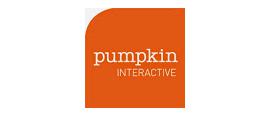Properties/applications of engineering materials
Adding just a small proportion of carbon to iron produces a material that is much stronger and harder. Mixing nickel and titanium can produce a material that has the extraordinary property of being able to ‘remember’ a shape. From just a few dozen metallic elements, there are an infinite number of alloys that can be created, each with their own characteristic properties. Understanding how the structure of metals and alloys determines their properties has led to advances in the design of alloys with properties suited to their intended applications.
This list suggests some activities that can be used with students to demonstrate the properties and applications of some common metals and alloys. There are links to other resources that can be used to illustrate their engineering applications.
Whilst this list provides a source of information and ideas for experimental work, it is important to note that recommendations can date very quickly. Do NOT follow suggestions which conflict with current advice from CLEAPSS, SSERC or other recent safety guides. eLibrary users are responsible for ensuring that any activity, including practical work, which they carry out is consistent with current regulations related to health and safety and that they carry an appropriate risk assessment. Further information is provided in our health and safety guidance
- ALL
- Teacher guidance
- Video
- Article
Teacher guidance
Metals and Smart Alloys
This booklet provides a source of ideas and information about metals and alloys, including smart alloys. It suggests some activities to demonstrate the properties of metals and some of their applications. The practical activities are intended for KS4 students but can be extended to use with Post-16 students.
The properties of steel and its uses – explains how the carbon content affects its properties (p.11)
Background information (p. 4 - 6 and p. 48 – 55 provides detailed information about the structures of metals and their alloys which explains their different properties.
The following activities are particularly useful to explain the properties of metals in engineering contexts:
1.
Activity A2 Modelling Metal Fracture (p.32 – 33) is particularly useful to demonstrate the effect of adding different percentages of carbon to iron. This activity should be used in conjunction with Resource R1 Tensile Testing of Carbon Steels (p.44)
2.
Activity A3 Exploring the Properties of Metals and alloys (p. 34)
3.
A4 Properties and uses of Steel (p. 35) – this looks at the properties and uses of carbon steels with different carbon contents. Resource Sheet R2 (p.45) provides the background information for the students to use.
Video
Material choices at Brompton
This video can be used as an introduction to the properties of steel. It considers the different grades of steel used in the frame design of a Brompton bicycle, typically steel tube and steel sheet. Designers needed to consider several criteria when choosing materials for a folding bicycle, including strength, weight and durability.
This can be used to prompt a discussion with students about the properties of materials required in the manufacture of bicycles (and other machinery).
Shape Memory Alloys
This can be used to introduce the properties and application of Smart metal alloys. The one mentioned in the clip is a nickel titanium shape memory alloy. It can bend and twist like ordinary steel wire, but when an electric current or heat is used to raise it above its threshold temperature it enters a super elastic state and returns to its original shape.
The booklet Metals and Smart alloys suggests activities which can be used with students to illustrate the uses and properties of other Smart alloys.
The most useful activities are:
B1 Introducing shape memory effect (p.36)
B5 Training a memory wire (p.40)
B6 Exploring the behaviour of a smart wire (p.42 – 43)
The booklet also provides background information on how smart alloys work (p. 46 – 47 and p. 53 – 55)
Article
Olympic Alloys
The article can be used as an introduction to the alloys. It illustrates how engineers must consider the properties of the materials used in manufacturing e.g. sports equipment and buildings. These include strength, density, toughness, ductility and resistance to fatigue.
Alloys are generally harder, stronger and resist corrosion better than pure metals. This article highlights that there is no upper limit to the number of possible new alloys with novel and useful properties.
The development of new alloys enables Olympic athletes to improve their performances. In the 2012 Games the gold, silver and bronze medals were all made from alloys – this article provides information about the composition of each medal.
This article can be used as background information at the start or end of the topic, or as part of a research project on the applications of alloys.
Aluminium
This article can be used to provided students with an overview of aluminium extraction and uses. The article looks at the processes of extraction and the different alloys it can be used to make. It provides detail of casting, making patterns, moulds and finishing.
Iron
This article provides an overview of the extraction and chemistry of iron and the blast furnace process which can be used as a revision summary or introduction to the the steel industry.




